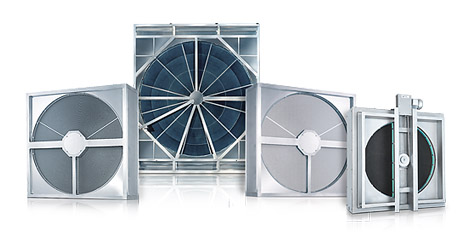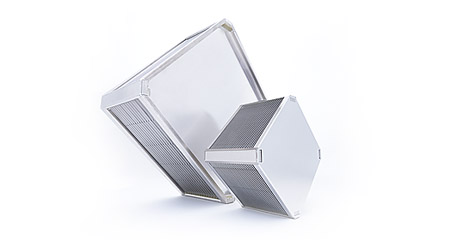
There are many Passive Houses - it's time for the Passive boat. This thought occurred to sailors and scientists alike based in Switzerland - and especially: Adventurers – such as Peter Gallinelli who built a yacht full of innovative and revolutionary ideas. With the support of Klingenburg.
Gallinelli,s Yacht "Nanuq" (Inuit term for ice bear), a nearly 710 inch (18 m)-long made from aluminum, is in principle a floating igloo. That's a good thing, because the plans of the skipper are more than ambitious: The "Nanuq" with its crew freeze will winter on the frozen pack ice of Greenland at temperatures of down to 40 degrees below zero. Gallinelli called the adventure the "Passive igloo project" in the eternal ice.
The core in the circulatory system of the Igloo Yacht are the counterflow plate heat exchangers from Klingenburg. The GS-18/150 is coated with epoxy resin, which makes the heat exchanger seawater resistant.
The plate heat exchanger makes a significant contribution that the "Nanuq" remains energy self-sufficient during the winter stay. A temperature of 25° above outside temperature can be achieved in the small, completely isolated cabin only through body heat and cooking. The GS-18/150 recovers a considerable part of this heat back.

As the graph shows, the cold outside air (1) is first heated by the seawater (2). The counterflow plate heat exchanger (3) utilizes the higher temperature-controlled air from the cabin (4) and heats the incoming air so on. The sample calculation shows that from minus 30 degrees outside air and plus eight degrees on board. The remaining heat supplied by electrical energy that is generated by wind turbines on the pack ice.

The "Passive Igloo Project" is dedicated to sustainability and energy efficiency, but there are still further research purposes. The crew will set three weather stations in the form of buoys for the French national weather service Météo France and for the environmental organization, Ocean eye, the crew will extract water samples to measure the concentration of plastic in artic waters.
More about the Nanuq-Project at http://igloo.sailworks.net/.
All News













